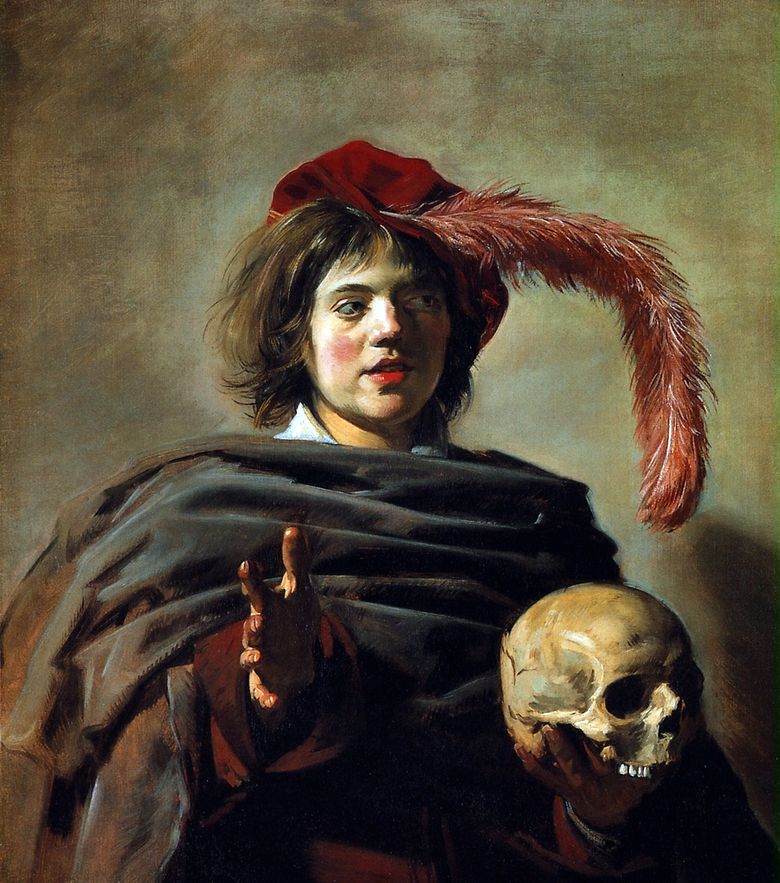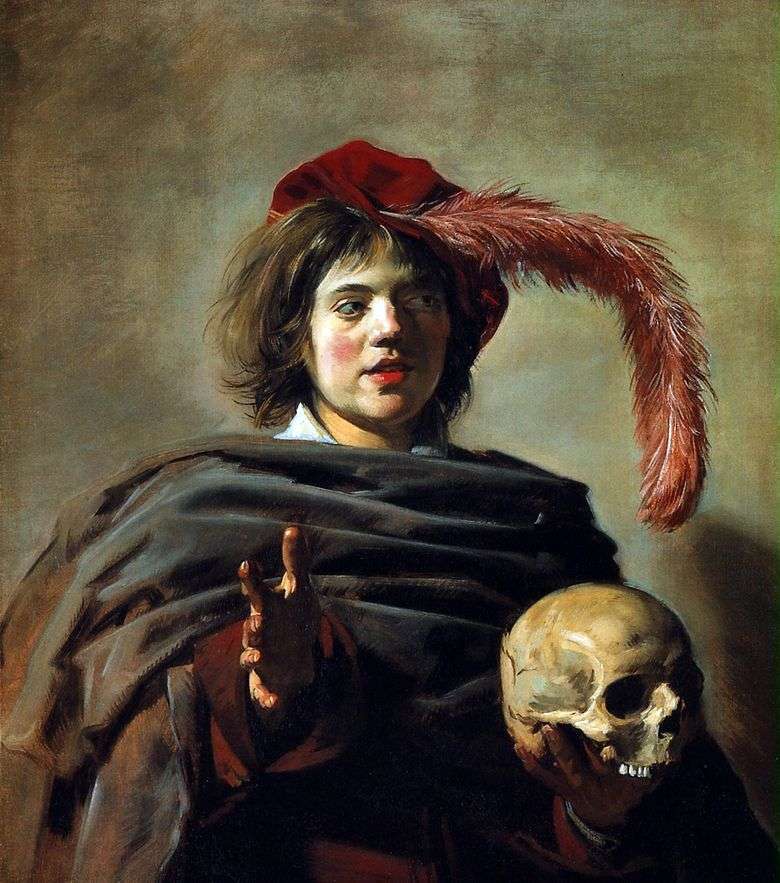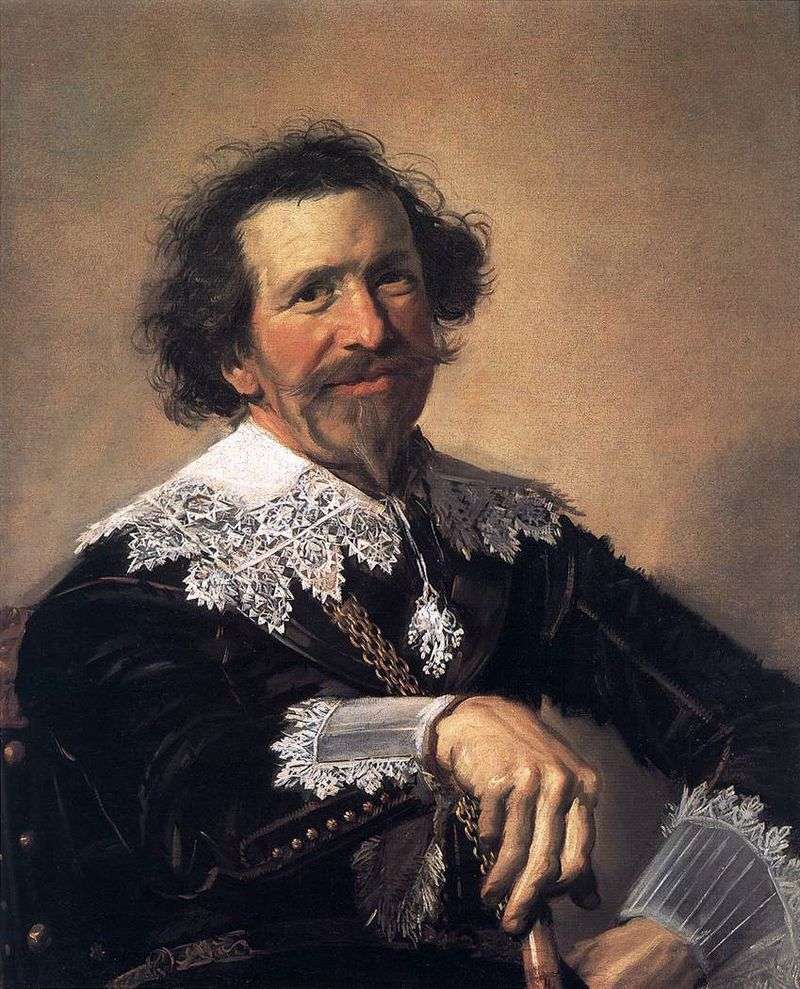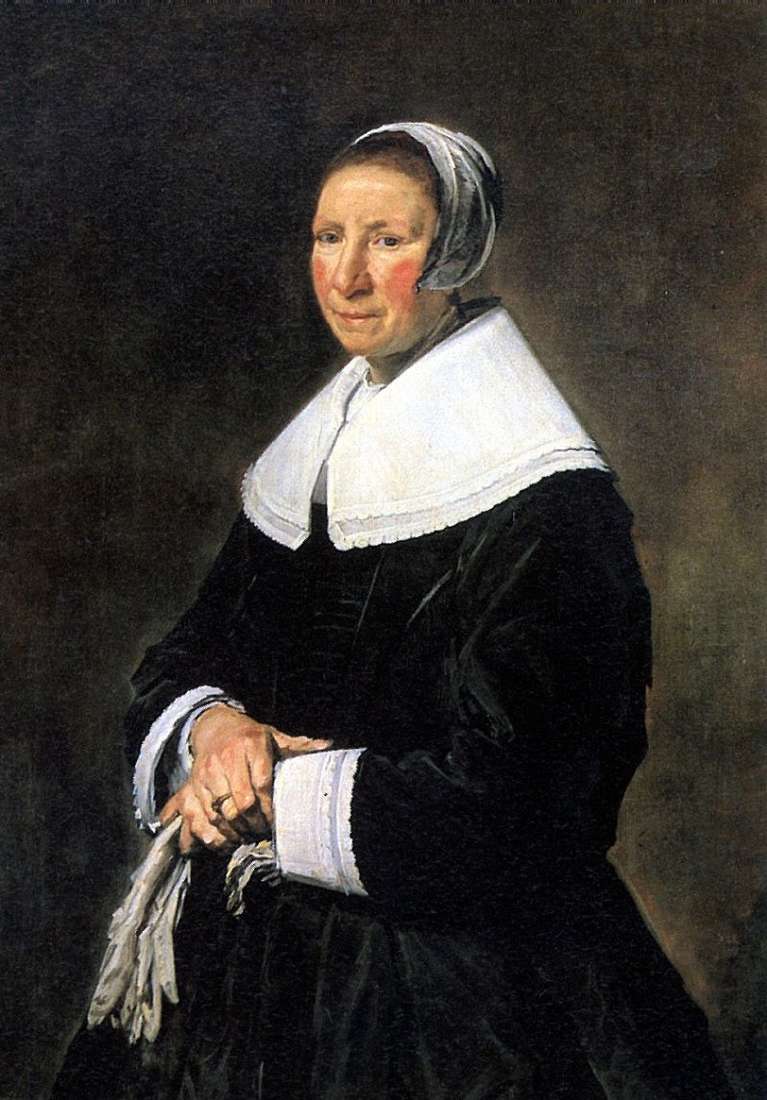
In fact, this portrait is not a portrait: although the young man is often identified as Hamlet, the picture is most likely a traditional for Dutch art allegory “Vanitas”, that is vanity in the sense of the ephemeral and vanity of earthly riches. Proof that the plot is based on this topic is a skull reminiscent of death.
The Dutch tradition of portraying the skull-bearing youth dates back to the engravings of the 16th century. His exotic attire is reminiscent of the picturesque manner of the Utrecht masters who followed Caravaggio’s then new techniques. But in Hals’s work there is a significant difference: the figure does not stand out from the shadows, as is usual with the artists of the above-mentioned school, but is illuminated from behind. There is the effect “trompe I’oeil” – the skull is depicted as if it is outside the plane of the picture. All this testifies to the great skill of the author.
 Portrait d’un jeune homme avec un crâne (Vanitas) – Frans Hals
Portrait d’un jeune homme avec un crâne (Vanitas) – Frans Hals Retrato de un hombre joven con una calavera (Vanitas) – Frans Hals
Retrato de un hombre joven con una calavera (Vanitas) – Frans Hals A family portrait of Isaac Massa and his wife by Frans Hals
A family portrait of Isaac Massa and his wife by Frans Hals Regents of the Harlem almshouse (Regent of the Shelter for the Elderly) by Frans Hals
Regents of the Harlem almshouse (Regent of the Shelter for the Elderly) by Frans Hals Portrait of Peter Van den Brocke by Frans Hals
Portrait of Peter Van den Brocke by Frans Hals Portrait of a Woman by Frans Hals
Portrait of a Woman by Frans Hals Family portrait in the background of the landscape by Frans Hals
Family portrait in the background of the landscape by Frans Hals The Regents of the Harlem Almshouse by Frans Hals
The Regents of the Harlem Almshouse by Frans Hals